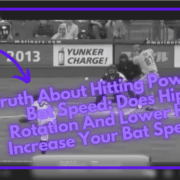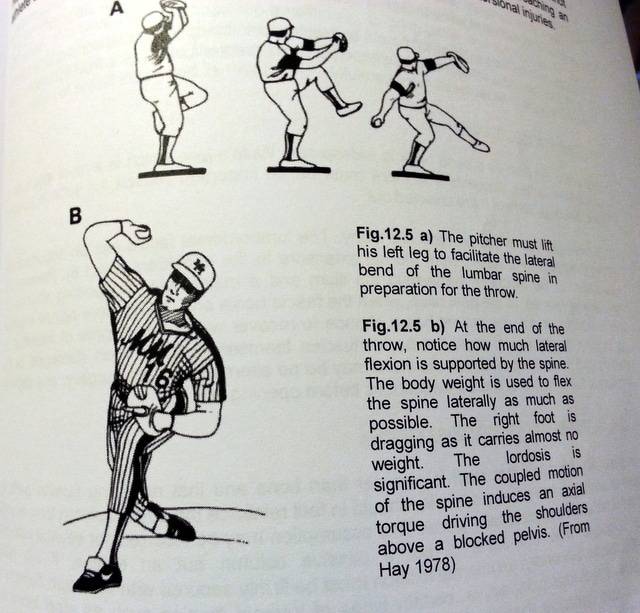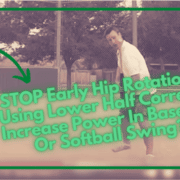Learn whether using hip rotation and the lower half increases hitting power or bat speed. Discover at home swing drills that DO improve power (NOT what you think)…
Clayton Kershaw + Roger Federer = Repeatable Hitting Power
Yes, hitters can build consistent explosive rotational power into their swings by learning from tennis players and baseball pitching athletes. CLICK HERE to check out this “Pitching Instruction Secrets for Hitters” video post I did featuring 2014 World Series MVP Madison Bumgarner.
I received an email from a teacher in Portugal named Alexandra Franco. She plays competitive tennis and is also a tennis instructor. She recently purchased my Truth About Explosive Rotational Power online video course to help her teach and play tennis better. She asked a lot of really good questions around how the spinal engine mechanics I’m teaching my hitters related to serving a tennis ball…
In this video, we’re going to explore Dr. Serge Gracovetsky’s Spinal Engine Mechanics, as they relate to:
- Moving the spine for performance,
- Comparing Alexandra’s serve to Roger Federer’s, and
- Apply key baseball pitching & tennis principles to hitting for repeatable power…
SCIENCE-BASED TRAINING:
Improve your hitting strategy dramatically by applying human movement principles.
Learn not only how and what to train but also the science behind the methods.
Moving the Spine for Performance
Dr. Serge Gracovetsky, in his book The Spinal Engine says,
“The spine cannot be rotated axially without flexing. The spinal engine theory requires the lumbar spine to be flexed laterally if an axial torque is to be induced.”
According to Dr. Gracovetsky, there are three possible spinal movements:
- Extension (lordosis)/Flexion – standing tall, or arching the lower back. And think of Flexion as rounding the back,
- Lateral Flexion or Side bending – standing tall, then flexing the upper body sideways at the waist, and
- Axial Rotation – this is the shoulders rotating opposite the pelvis. Think of this as torque or how a gear box works.
He then adds that if two of the above are present, then almost always the end result is the third. All explosive rotational athletes, have to abide by these rules to human movement. Let’s see how Alexandra and Roger Federer use a combination of the above three spinal movements for performance…
Comparing Tennis Serve of Alexandra to Roger Federer
Here are some key differences Alexandra can use to up her tennis serve…Roger Federer tends to:
- Bend both knees as he throws the ball in the air, which helps with
- Maintaining strict alignment with his head and spine as he globally extends (head & spine as one piece) over his heels,
- As he’s doing this, he angles his shoulders up towards the apex of the ball causing an extreme side bend of the spine (in the video, look how low his back shoulder gets compared to his front), and
- Going into axial rotation to hit the ball, watch how both elbows move counter-clockwise, at the same time, and on the same plane with the shot.
Apply Key Baseball Pitching & Tennis Principles to Hitting for Repeatable Power
The tennis serve and baseball pitching mechanics are very similar. Dr. Serge Gracovetsky says,
“The large torque required to propel the baseball demands such a large amount of lateral bending that the pelvis must be rocked as well. It is this requirement that precipitates the characteristic lift of the left leg before the throw.”
One of the key differences to hitting is the shoulder angle (lateral bend). Hitters need to move the front shoulder slightly down to hit the ball up. I get this with my hitters by cuing them to raise the back elbow at or above the top hand (see Trout photo above).
Whereas baseball pitching athletes, like 2014 NL Cy Young and MVP Award winner Clayton Kershaw, and Roger Federer need to angle the front shoulder up before throwing or hitting the ball down.
One last thought from Dr. Serge Gracovetsky about proper spinal engine mechanics for explosive rotational athletes:
“The axial rotation of the spine cannot happen unless the spine is flexed by the right amount on the correct side. Coaching an athlete to throw without a proper spinal position is an invitation to severe torsional injuries.”







